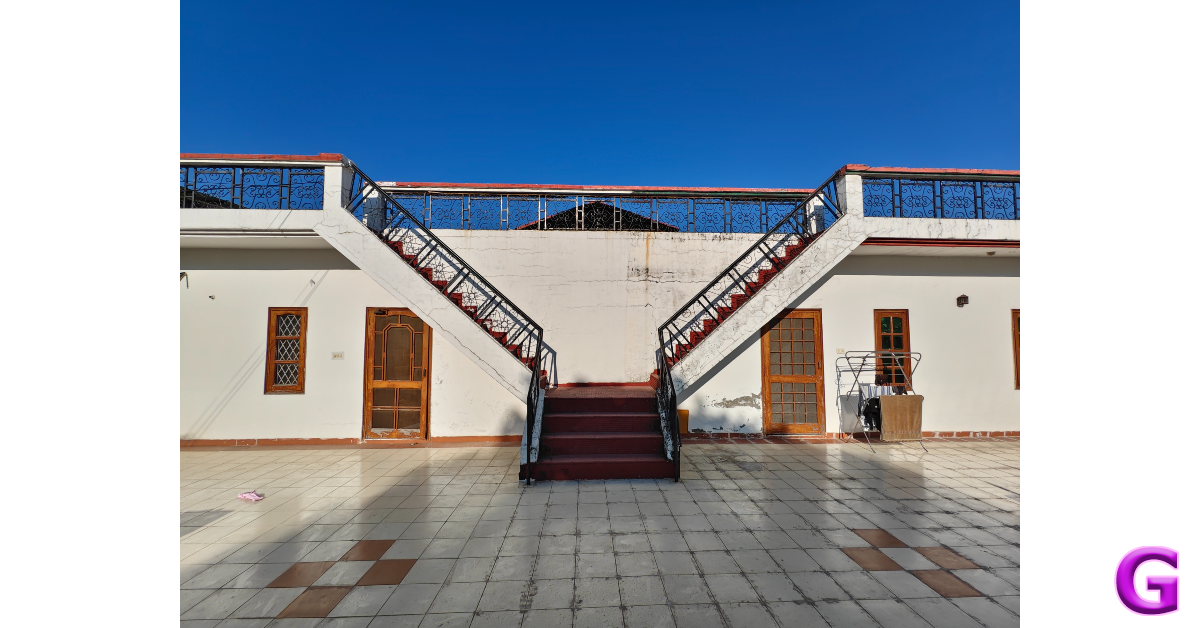iQOO 13 is one of the first smartphones to be launched with the Snapdragon 8 Elite SoC. At a starting price of Rs 54,999, it is one of the most affordable smartphones to be powered by Qualcomm’s flagship chipset for 2025. This isn’t new for iQOO, as the company has consistently put out high-end smartphones at attractive prices for the last several years. While it is easy to box the iQOO 13 in the gaming category, it is a well-rounded device that will appeal to casual users as well. Looking at the spec sheet, it is abundantly clear that this smartphone can compete with the established flagship smartphones while costing almost half the price. But how does it perform in day-to-day use? We used the smartphone for a week to find out. Here is our in-depth review of the iQOO 13.
Read Also: How to use OpenAI’s Sora video generator?
iQOO 13 Review: Design and Display
Here’s what you get inside iQOO 13’s retail box:
- Smartphone
- 120W power adapter
- USB Type-C cable
- Clear plastic case
- SIM ejector
- Warranty card
- Quick start guide
The iQOO 13 carries forward the design language established by its predecessor, bar a few tweaks. The iQOO branding and BMW stripes have been moved to the right side of the back panel and the LED flash is now positioned inside the camera cutout. The camera module retains its squarish shape with round edges but is now bordered by a ‘Dynamic Light’. This Dynamic Light flashes when the device receives a phone call or a new notification. You can program it to signal low battery status or sync it with the music playing on the device. If you don’t care about the battery drain, there is an option to keep it active at all times.
The glass back panel has a frosted finish, which keeps smudges and fingerprints at bay. This panel curves ever so slightly towards the metal frame of the device. The shiny aluminium alloy frame has flat edges and rounded corners. Overall, the in-hand feel of the smartphone is exquisite. The two buttons (volume rocker and side key) sit plush on the right edge of the frame and have no looseness to them. The bottom edge houses the SIM tray, primary microphone, USB slot, and primary speaker grill. The secondary speaker grill and microphone are positioned up top. The iQOO 13 also has an IR blaster but it is nestled inside the rear camera module.
The iQOO 13 flaunts an impeccable 2K LTPO AMOLED display with a 144Hz refresh rate. This flat display can reach 1,800 nits in High Brightness Mode and has a peak brightness of 4,500 nits. It is surrounded by slim and uniform bezels. The AMOLED panel is very responsive, registering the most subtle of touches with great precision. The refresh rate can be set to 144Hz from the display settings. There is an option to manually select high refresh settings for specific apps. However, our favourite upgrade on the smartphone is the under-display ultrasonic fingerprint scanner. It is very snappy and much faster than its optical counterparts. Getting this piece of hardware on a smartphone priced under Rs 60,000 is quite rare.
During the review period, we streamed several titles on the iQOO 13 across OTT platforms like Disney+ Hotstar, Netflix, and Prime Video. The smartphone impressed us with its vibrant picture quality, smooth motion, and tasteful contrast levels. The 2K display resolution ensures vivid images that pack a lot of detail. The stereo speaker setup produces a crisp audio output that does not distort even at the highest volume limit.
Most ‘flagship killers’ make concessions in the water and dust resistance department to keep their prices in check. The iQOO 13, however, does no such thing, offering top-notch IP68/69 protection. It can withstand water submersion up to 1.5m for 30 minutes.
iQOO 13 Review: Performance and Cameras
As mentioned earlier, the iQOO 13 is powered by the latest Snapdragon 8 Elite chipset. This processor is paired with iQOO’s in-house Supercomputing Chip Q2. The smartphone is available in 2 RAM + Storage configurations – 12GB + 256GB (Rs 54,999) & 16GB + 512GB (Rs 59,999). The top-spec variant, which we used for this review, features LPPDR5X Ultra RAM and UFC 4.1 storage. During the review period, ran the Geekbench 6 test on the iQOO 13 and were highly impressed by the results. The smartphone scored 3,093 points in the single-core test and 9,858 points in the multi-core test.
When it comes to general performance, the iQOO 13 blows every other smartphone out of the water. The apps on the device load at a lightning-fast speed and the ultra-smooth display ensures that you’re always on top of things. We loaded a dozen apps on the smartphone at once and it remained unfazed, intelligently optimising the apps in the background and maintaining its rapid speed. It went through routine tasks like emailing, instant messaging, video calling, and media streaming like a hot knife through butter.
The gaming performance is where benchmark numbers truly come into effect. You can run the most demanding games on this device with absolute ease. Its Supercomputing Chip Q2 gives you that extra edge, upscaling the native image quality (to 2K) and boosting the frame rate (to 144Hz) of supported games. The 7,000mm² VC cooling system keeps the internal temperature of the smartphone in check during high-intensity gaming sessions.
We played titles like BGMI, Call of Duty Mobile, and Apex Legends Unite on the iQOO 13 during the review period. The smartphone expertly handled the demanding graphics and was able to unlock high in-game frame rates. After an hour of gameplay, there was minimal warmth to be felt on the back panel. Bypass charging is another underrated feature that allows you to charge the smartphone directly instead of powering the battery. This limits the overheating as the current does not pass through the battery at all.
On the software front, iQOO 13 ships with the Android 15-based Funtouch OS 15 out of the box. iQOO newest skin for its smartphones retains the DNA of its predecessor. The layout and design of the new OS are similar to Funtouch OS 14. What we like about this OS is the range of customisation options it offers. You can personalise elements like the fingerprint icon/animation, charging animation, USB insertion animation, home screen transitions, and more. As we mentioned earlier, there are plenty of options for customising the Dynamic Light as well.
You also get a handful of AI features on the new Functouch OS 15. Google’s new ‘Circle to Search’ feature is present on this device. The native gallery app has AI tools to enhance images and erase unwanted objects from them. You also get privacy features like app encryption, app hiding, and phone clone. There are some bloatware apps on this device, but they can be easily uninstalled. iQOO has promised 4 major OS upgrades and 5 years of security patches for this smartphone. This isn’t close to what Google and Samsung offer for their flagships, but it isn’t a dealbreaker either.
Moving on, the iQOO 13 packs a massive 6,000 mAh battery under its hood. The smartphone puts battery anxieties to the side and lasts an entire day with ease. If you’re more conservative with your usage, you can push the battery life to 2 days. Fast charging support of 120W is another huge bonus. It took us just over 30 minutes to fully charge the smartphone using the power adapter provided in the box. The lack of wireless charging is one of the tradeoffs that iQOO has made to keep the price of the device in check. This doesn’t hurt a lot when you consider that the device only needs 30 minutes to reach a 100% battery level.
One of the things we like about iQOO’s flagship devices is that they offer a good camera performance that can match the leading camera specialists in its category. Each of the 3 lenses in iQOO 13’s rear camera module packs a 50MP sensor. However, this year, iQOO’s flagship smartphone carries a 2x telephoto lens instead of the 3x periscope telephoto unit from iQOO 12. This is a bit of a letdown because we enjoyed using the 64MP periscope telephoto camera on last year’s smartphone.
The 50MP Sony IMX921 primary shooter takes great images in outdoor daylight conditions. The smartphone assigns rich, life-like colours to the images and retains the crisp details of the shadows. The contrast and dynamic range of the images are also very good. The versatility of the primary shooter is showcased in limited conditions. This is where iQOO’s Supercomputing Chip Q2 kicks into action, brightening the subject and bringing a lot of clarity to the images. The images are free of grain and noise.
 Primary Shooter: Without Night Mode v Night Mode
Primary Shooter: Without Night Mode v Night Mode Ultrawide Lens
Ultrawide LensThe ultrawide lens does its best to retain the colour profile of the main sensor. There is very little drop-off to be seen here. We were particularly impressed with how this lens exposed the sky and assigned it deep colours. It also managed to pack a lot of details, rendering crisp shadows whenever the scene demanded it. In limited lighting conditions, this camera produced good results, bringing a lot of clarity to the dimly lit scene.
 Ultrawide Lens
Ultrawide Lens Ultrawide Lens: Without Night Mode v Night Mode
Ultrawide Lens: Without Night Mode v Night ModeThe 2x telephoto lens takes good zoomed-in shots, but the change in the colour tone compared to the main camera is noticeable. At 4x zooms, the smartphone digitally crops the images from this lens and the results are a little soft. We used the maximum 30x zoom setting to take images of distant billboards and the results were less than impressive. A software upgrade can perhaps improve the camera’s ability to enhance the text.
 1x v 2x
1x v 2x 4x v 5x
4x v 5x 10x v 30x
10x v 30xThere are 4 zoom levels for portrait shots – 1x, 1.5x, 2x, and 4x. The on every zoom level are well-focussed. The smartphone does a good job of identifying the edges of the subject and applying the ideal blur effect to the background. However, there is a visible colour shift in 2x and 4x portraits. The 32MP front-facing camera takes good selfies but tends to smoothen the skin texture. As far as video recording is concerned, the primary shooter can record stunning 8K footage at 30fps. The selfie camera can record 4K footage at 30/60fps.
 Portrait Shots: 1x v 1.5x
Portrait Shots: 1x v 1.5x Portrait Shots: 2x v 4x
Portrait Shots: 2x v 4xRead Also: Lenovo ThinkPad T14s Gen 6 Copilot+ PC Launched in India
Verdict
The iQOO 13 is a power-packed device that leaves no stone unturned in its performance. It is one of the finest smartphones to showcase the Snapdragon 8 Elite processor yet. iQOO’s in-house Supercomputing Chip Q2 takes things to another level. If you’re serious about mobile gaming, the iQOO 13 would be our easiest smartphone recommendation.
However, simply calling it a ‘gaming smartphone’ does not do justice to the iQOO 13. Its impressive 2K display coupled with the stereo speaker output makes for a delightful media-watching experience. Premium features like the under-display ultrasonic fingerprint scanner, NFC, IP68/69 protection, and IR blaster give it the edge over its competitors. The build quality and design of the device are top-notch as well. When you consider its affordable pricing, the iQOO 13 could easily be one of the best smartphones in the market well into 2025.
iQOO 13: Pros
- Amazing 2K display with 144Hz refresh rate
- Ultrasonic fingerprint scanner
- Snapdragon 8 Elite chipset
- IP68/69 protection
- 120W fast charging
- Great night-time photography
iQOO 13: Cons
- 2x telephoto lens instead of 3x periscope telephoto





























 English (US) ·
English (US) ·